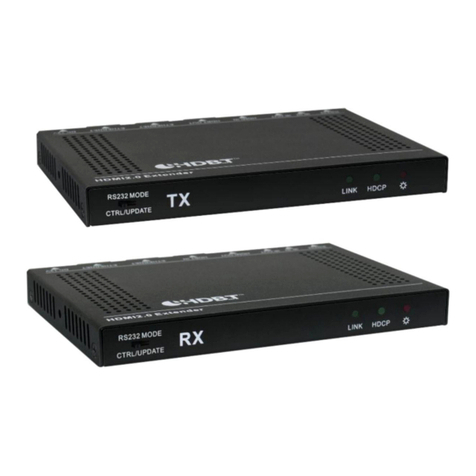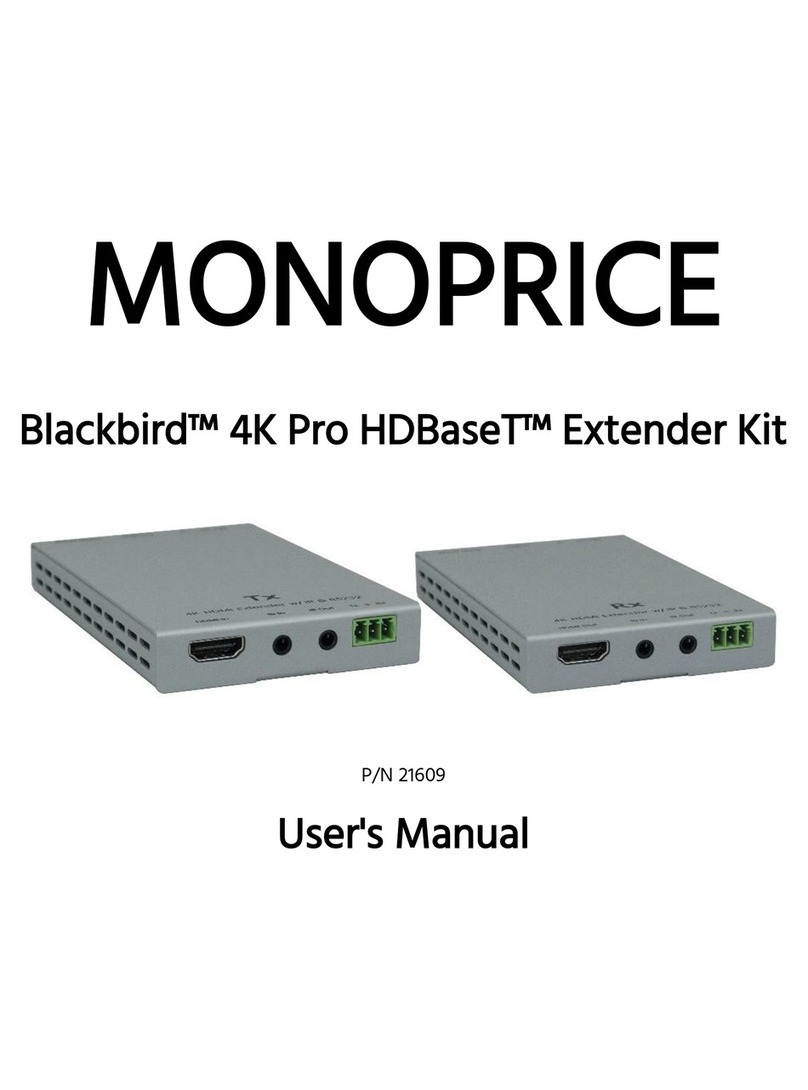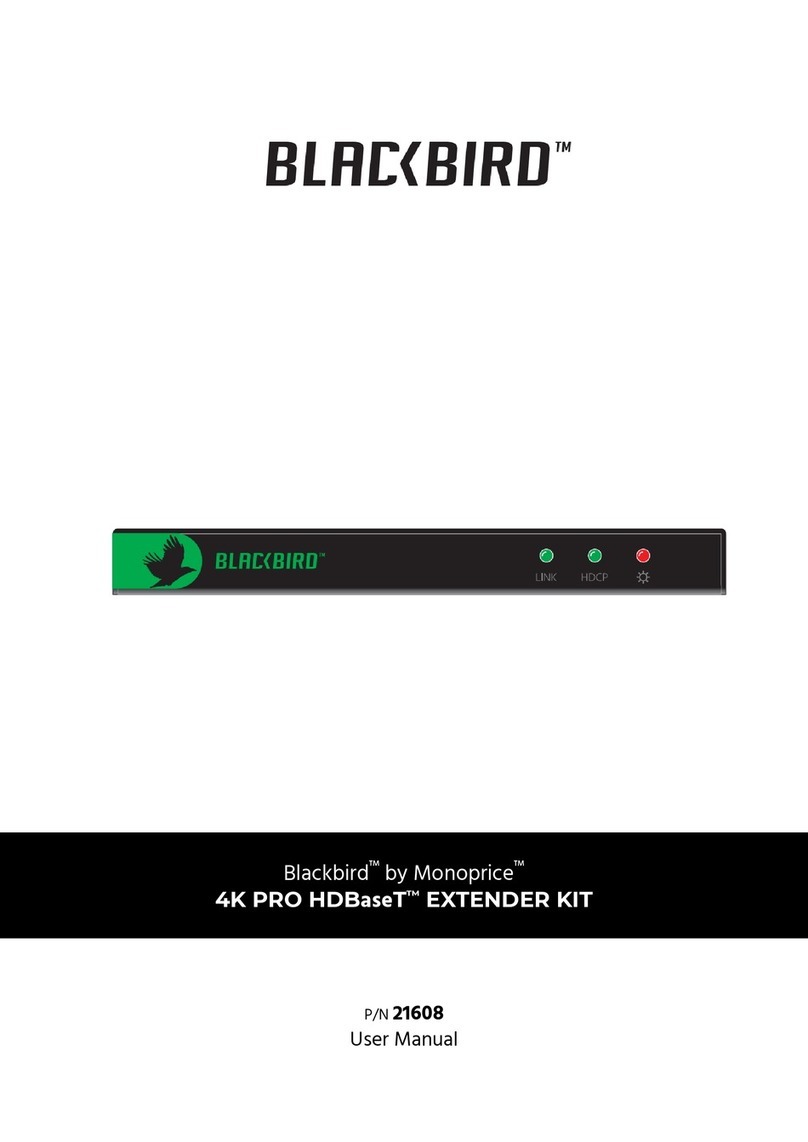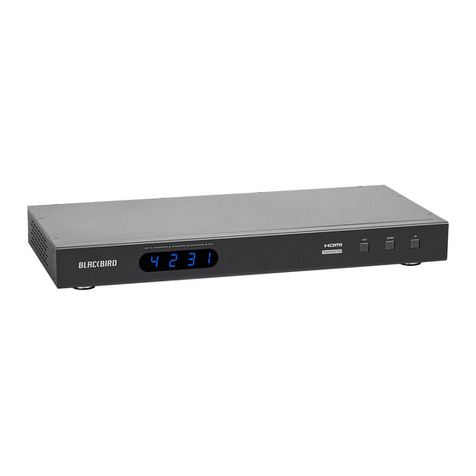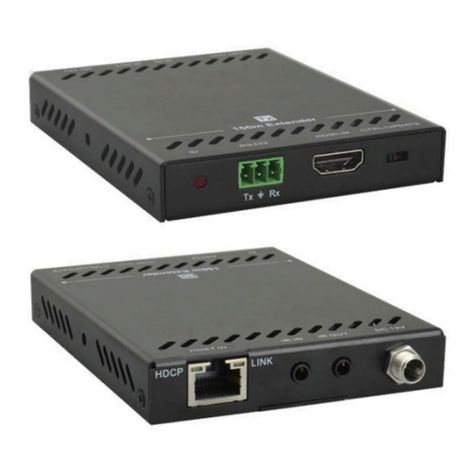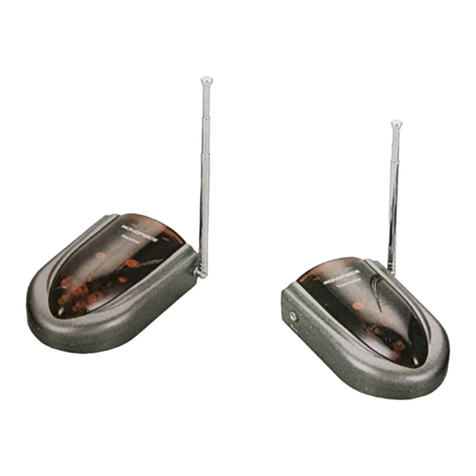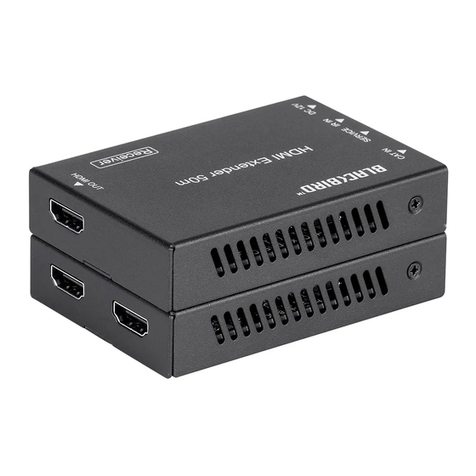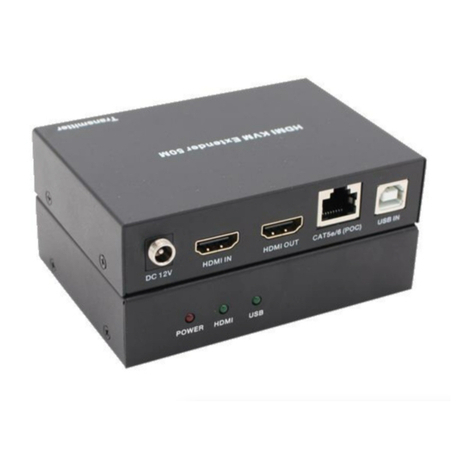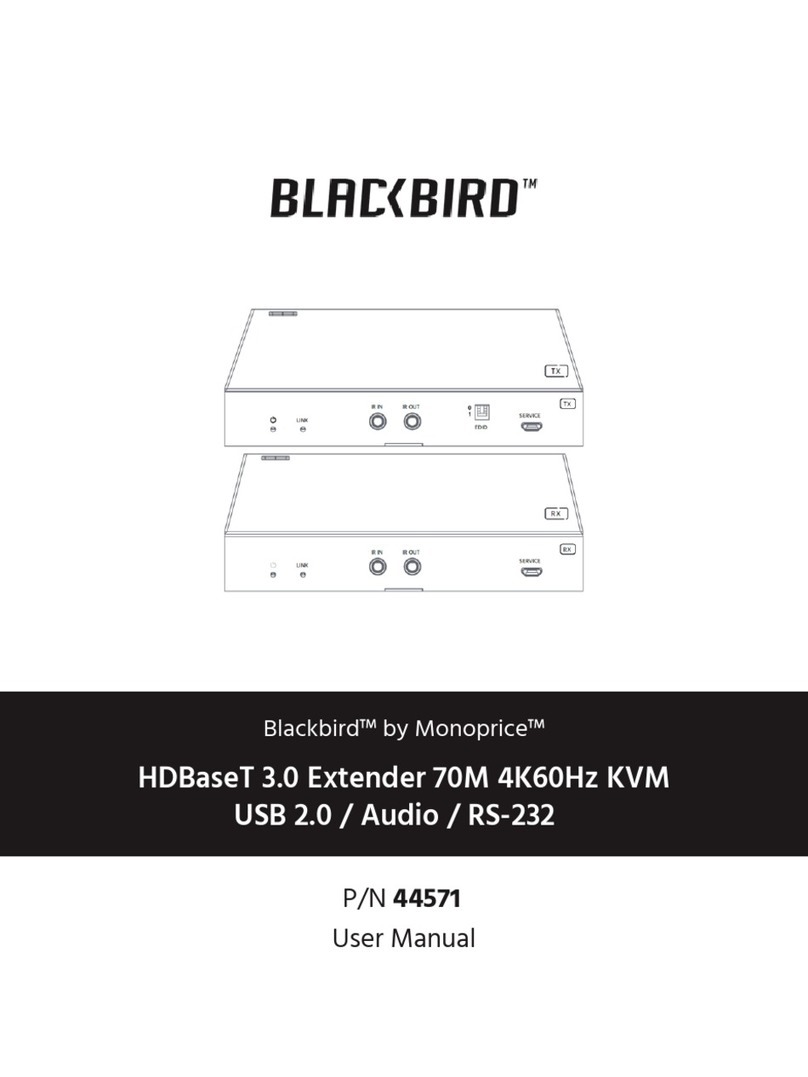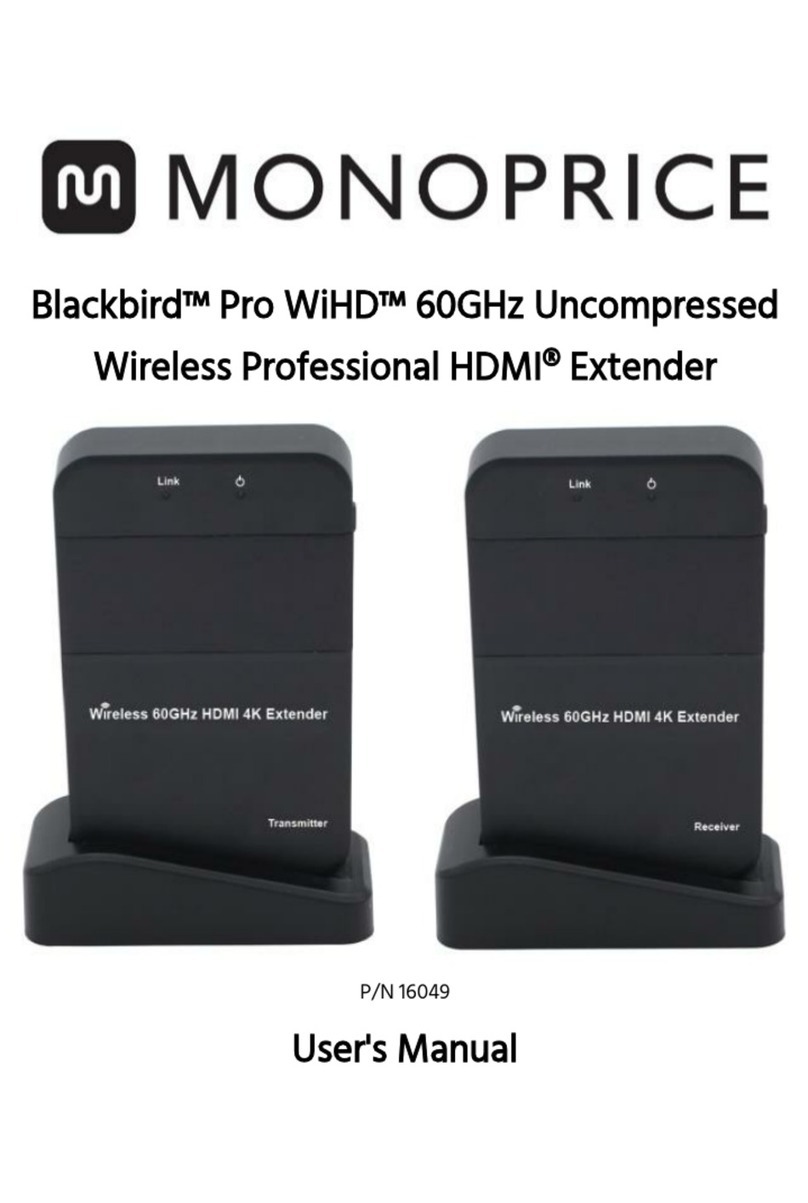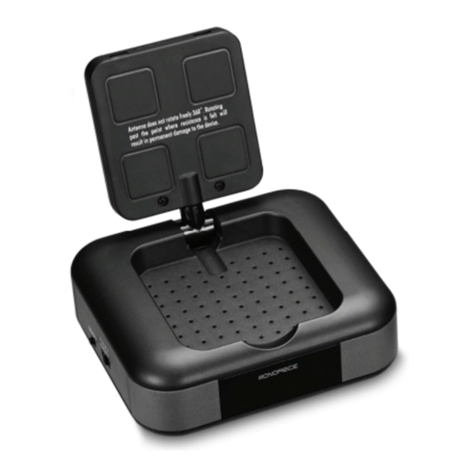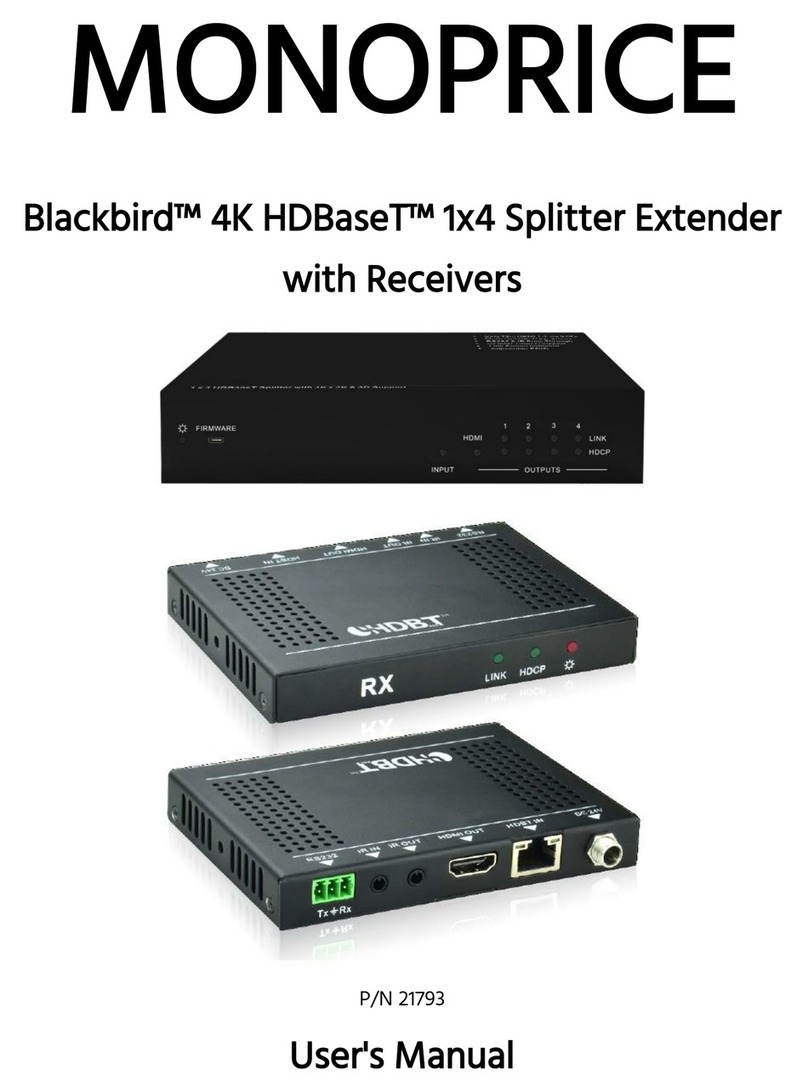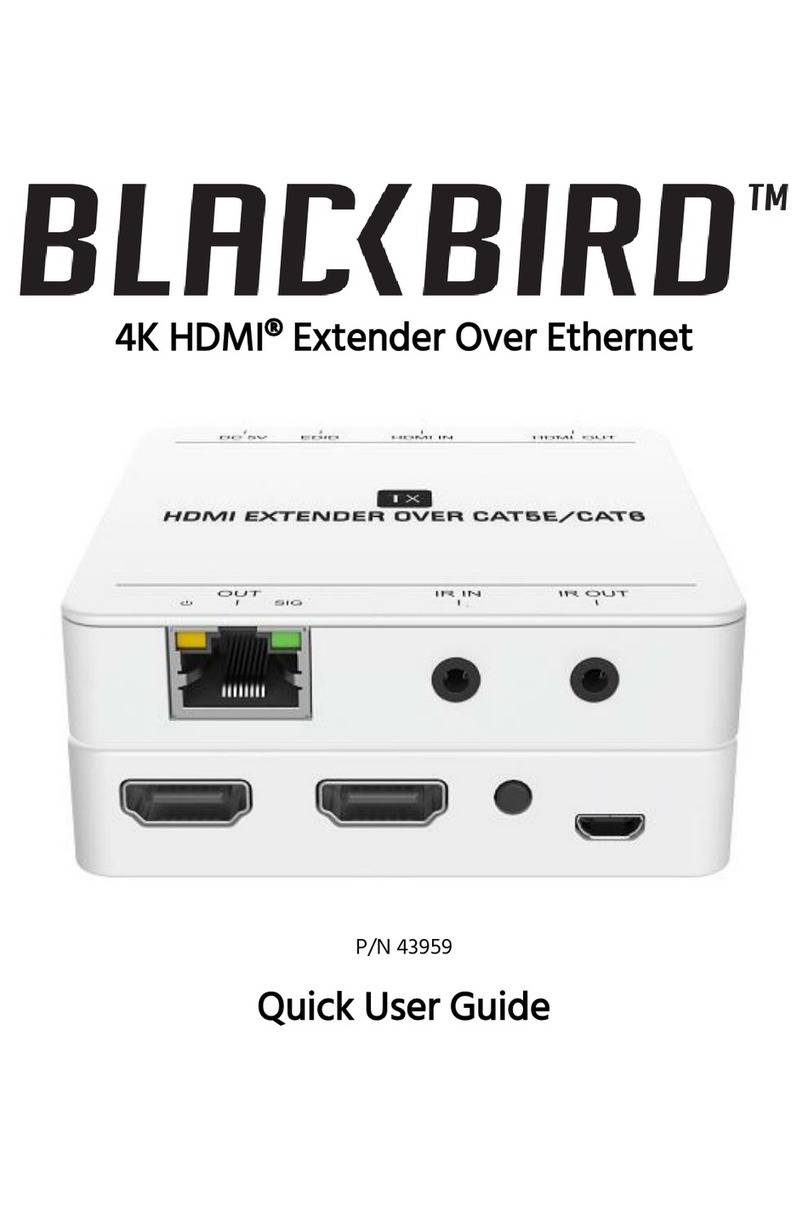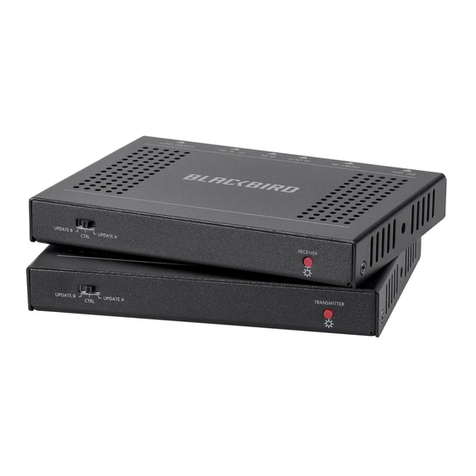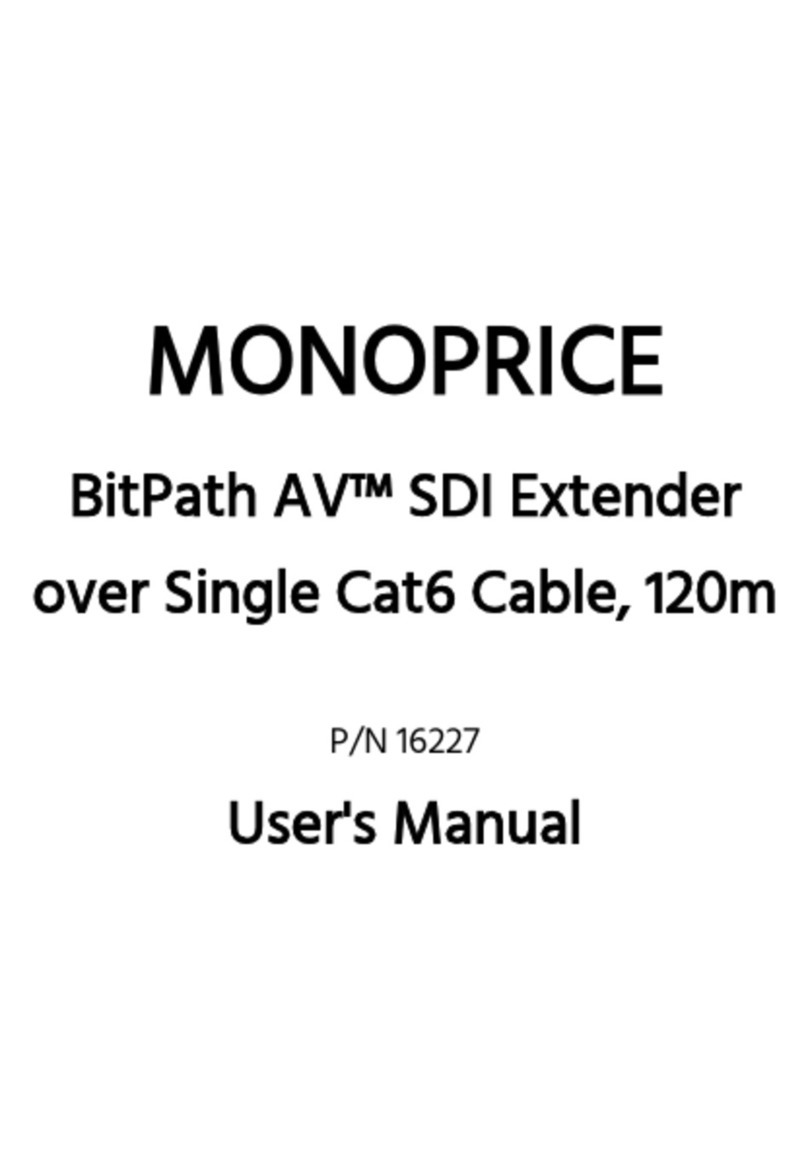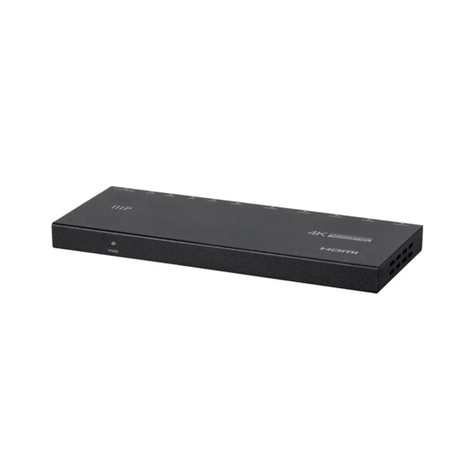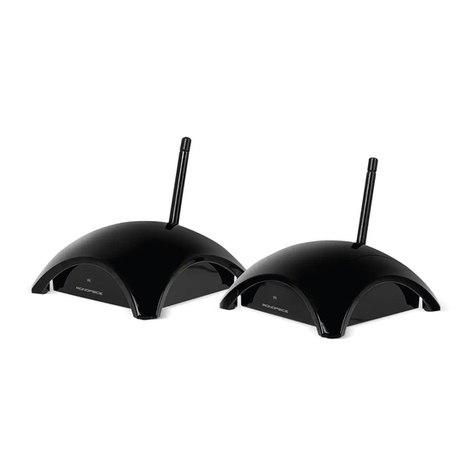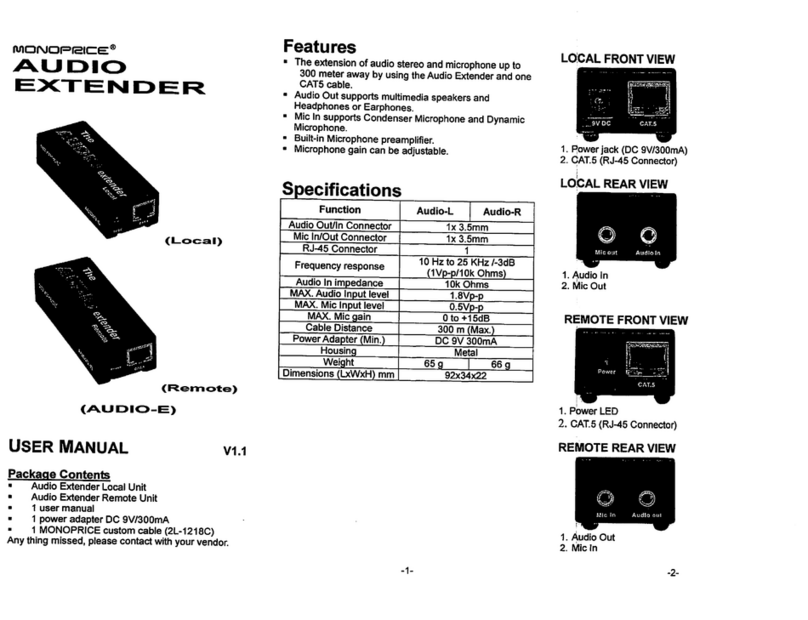
9
7. Connect one end of the Cat6 Ethernet cable to the CAT port on the receiver.
8. Place the extender transmitter at the source location.
9. Connect one end of the Cat6 Ethernet cable to the CAT port on the transmitter.
10. (Optional) Using a High Speed HDMI Cable (not included), plug one end into the
HDMI® input on a display at the source location or into the HDMI input of another
extender or other HDMI device. Plug the other end into the HDMI Out port on the
transmitter.
11. Using a High Speed HDMI Cable (not included), plug one end into the HDMI In port
on the transmitter, then plug the other end into the HDMI output of your HDMI
source device (e.g., DVD or Blu-ray Disc™ player).
12. (Optional) Plug either the IR receiver or IR transmitter into the IR Out port on the
transmitter. If you want to control the source device from the remote location, use
the IR transmitter. If you want to control the remote display from the source
location, use the IR receiver instead.
13. If using the IR transmitter, position the "bulb" where it can transmit signals to the IR
receiver on your source device. If using the IR receiver, position the "bulb" where it
can receive signals from your remote control.
14. Slide the EDID switch on the transmitter to the Left position if you want to obtain
EDID information from the remote display. If you want to obtain EDID information
from a display connected to the pass-through HDMI connector on the transmitter,
slide the switch to the Right position instead.
15. Plug the DC barrel connector on one of the AC power adapters into the DC5V jack
on the receiver, then plug the adapter into a nearby AC power outlet. Verify that
the Power LED illuminates.
16. Plug the DC barrel connector on the other AC power adapters into the DC5V jack on
the transmitter, then plug the adapter into a nearby AC power outlet. Verify that
the Power LED illuminates.
17. Verify that the Link LED illuminates. It may take several minutes before a handshake
is achieved.

